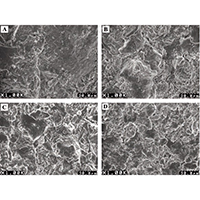Effects of controlled burn rice husk ash on geotechnical properties of the soil

Published: 23 December 2021
Abstract Views: 1066
PDF: 556
HTML: 56
HTML: 56
Publisher's note
All claims expressed in this article are solely those of the authors and do not necessarily represent those of their affiliated organizations, or those of the publisher, the editors and the reviewers. Any product that may be evaluated in this article or claim that may be made by its manufacturer is not guaranteed or endorsed by the publisher.
All claims expressed in this article are solely those of the authors and do not necessarily represent those of their affiliated organizations, or those of the publisher, the editors and the reviewers. Any product that may be evaluated in this article or claim that may be made by its manufacturer is not guaranteed or endorsed by the publisher.
Similar Articles
- Alexandros Sotirios Anifantis, Simone Pascuzzi, Giacomo Scarascia-Mugnozza, Geothermal source heat pump performance for a greenhouse heating system: an experimental study , Journal of Agricultural Engineering: Vol. 47 No. 3 (2016)
- Evelia Schettini, Giovanni Puglisi, Fabiana Convertino, Fernando Antonio Cancellara, Giuliano Vox, Greenhouse localized heating powered by a polygeneration system , Journal of Agricultural Engineering: Vol. 52 No. 3 (2021)
- Yubing Sun, Yutong Zheng, Application of MOS gas sensors for detecting mechanical damage of tea plants , Journal of Agricultural Engineering: Vol. 55 No. 4 (2024)
- Fabrizio Mazzetto, Pasqualina Sacco, Aldo Calcante, Algorithms for the interpretation of continuous measurement of the slurry level in storage tanks , Journal of Agricultural Engineering: Vol. 43 No. 1 (2012)
- Simone Pascuzzi, Emanuele Cerruto, An innovative pneumatic electrostatic sprayer useful for tendone vineyards , Journal of Agricultural Engineering: Vol. 46 No. 3 (2015)
- Pankaj Tyagi, Rahul Semwal, Anju Sharma, Uma Shanker Tiwary, Pritish Varadwaj, E-nose: a low-cost fruit ripeness monitoring system , Journal of Agricultural Engineering: Vol. 54 No. 1 (2023)
- Aristide Timene, Haman Djalo, Design of a five-bar duckbill-type mechanism for sorghum transplanting , Journal of Agricultural Engineering: Vol. 54 No. 2 (2023)
You may also start an advanced similarity search for this article.

 https://doi.org/10.4081/jae.2021.1216
https://doi.org/10.4081/jae.2021.1216







